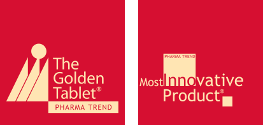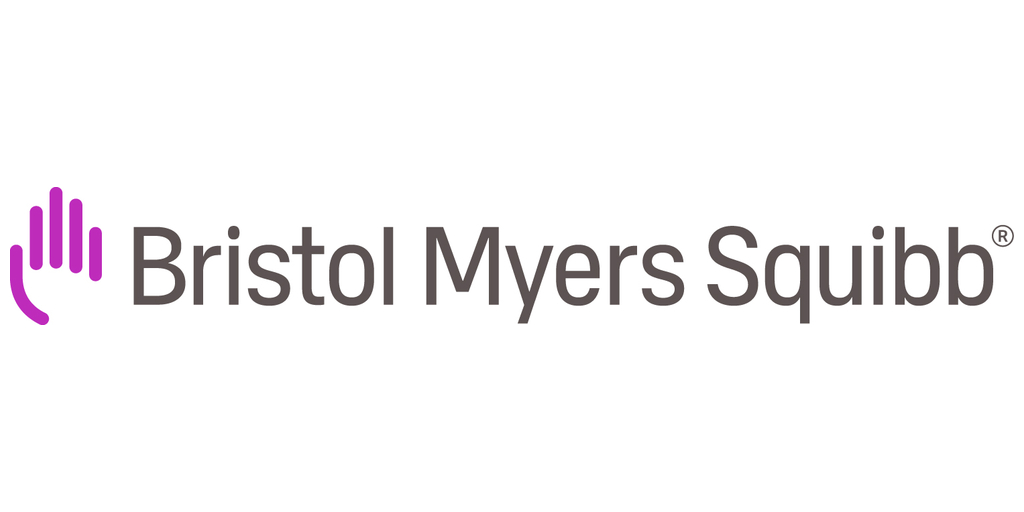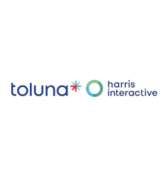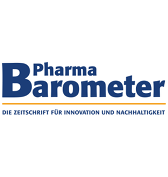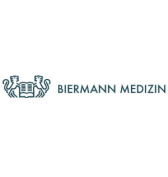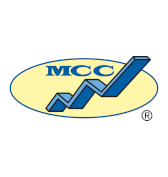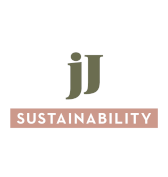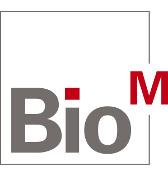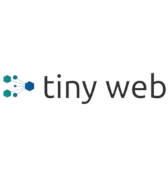PRINCETON, N.J.–(BUSINESS WIRE)–$BMY #Anemia—Bristol Myers Squibb (NYSE: BMY) today announced the Phase 3 INDEPENDENCE trial evaluating Reblozyl® (luspatercept-aamt) with concomitant janus kinase inhibitor (JAKi) therapy in adult patients with myelofibrosis-associated anemia receiving red blood cell (RBC) transfusions did not meet its primary endpoint of RBC transfusion independence during any consecutive 12-week period, starting within the first 24 weeks of treatment, compared to placebo (p=0.0674). Patients saw a numerical and clinically meaningful improvement in RBC transfusion independence favoring Reblozyl, in line with previous results from the Phase 2 trial (NCT03194542).
Several important secondary measures also showed a clinically meaningful benefit favoring Reblozyl, which included a higher number of patients who achieved at least a 50% reduction (and by at least 4 RBC units) in RBC transfusion burden, as well as a higher number of patients achieving a hemoglobin (Hb) level increase by at least 1 g/dL while remaining transfusion independent for at least 12 consecutive weeks.
Frequently observed treatment emergent adverse events were consistent with the known safety profile of Reblozyl previously reported across indications.
The company is encouraged by the clinically meaningful results of the study and will engage with the FDA and EMA to discuss the submission of marketing applications.
“It is promising to see that Reblozyl led to clinically relevant improvement of anemia for patients with myelofibrosis, where patients often become increasingly transfusion dependent over time,” said Anne Kerber, Senior Vice President, Head of Development, Hematology, Oncology, and Cell Therapy for Bristol Myers Squibb. “We remain confident in the ability of Reblozyl to improve outcomes for patients with myelofibrosis-associated anemia and believe the totality of these results, including meaningful improvements in transfusion burden and hemoglobin levels, support the potential to address an unmet need in patients who have few treatment options.”
“Anemia remains a significant challenge in the treatment of myelofibrosis, with many patients still dependent on red blood cell transfusions or suboptimal treatment approaches that can sometimes worsen anemia associated with the disease,” said John Mascarenhas, MD, Professor of Medicine at the Icahn School of Medicine at Mount Sinai and Director of the Center of Excellence for Blood Cancers and Myeloid Disorders at The Tisch Cancer Institute. “Patients with myelofibrosis and anemia are difficult to treat, and these results show that Reblozyl can have an important impact on anemia associated with the disease.”
Reblozyl is a standard of care for the first-line treatment of anemia without previous erythropoiesis stimulating agent use (ESA-naïve) in adult patients with very low- to intermediate-risk myelodysplastic syndromes (MDS) who may require RBC transfusions, treatment of anemia failing an erythropoiesis stimulating agent and requiring 2 or more RBC units over 8 weeks in adult patients with very low- to intermediate-risk myelodysplastic syndromes with ring sideroblasts (MDS-RS) or with myelodysplastic/myeloproliferative neoplasm with ring sideroblasts and thrombocytosis (MDS/MPN-RS-T), and treatment of anemia in adult patients with beta thalassemia who require RBC transfusions.
Bristol Myers Squibb thanks the patients, investigators and clinical trial sites who participated in the INDEPENDENCE clinical trial.
About the Phase 3 INDEPENDENCE Trial
INDEPENDENCE (NCT04717414) is a Phase 3, double-blind, randomized study to compare the efficacy and safety of luspatercept vs placebo in patients with myeloproliferative neoplasms (MPN)-associated myelofibrosis (MF) on associated JAK2 inhibitor therapy and who require red blood cell (RBC) transfusions. The primary outcome measure is the proportion of patients who became RBC-transfusion-free over any consecutive 12-week period starting within the first 24 weeks. The key secondary endpoint was the proportion of patients who became RBC transfusion independent over any consecutive 16-week period, starting within the first 24 weeks. Additional secondary endpoints measured increase in hemoglobin (Hb) levels, and at least a 50% reduction in RBC transfusion burden.
About Myelofibrosis
Myelofibrosis (MF) is a rare type of blood cancer, with an annual incidence of approximately 0.3 cases per 100,000 individuals in the U.S. It is one of a group of blood cancers called chronic myeloproliferative neoplasms (MPN), in which bone marrow stem cells that produce blood cells develop and function abnormally. MF is characterized by the buildup of scar tissue, called fibrosis, in the bone marrow. As scar tissue increases, the bone marrow cannot make enough healthy blood cells, which can lead to anemia, a condition characterized by not having enough healthy red blood cells to carry oxygen to the body’s tissues.
About Reblozyl
Reblozyl, a first-in-class therapeutic option, promotes late-stage red blood cell maturation in animal models. Reblozyl is being developed and commercialized through a global collaboration with Merck as of November 2021. Reblozyl is indicated in the U.S. for the treatment of:
- anemia in adult patients with beta thalassemia who require regular red blood cell (RBC) transfusions, and
- anemia without previous erythropoiesis stimulating agent use (ESA-naïve) in adult patients with very low- to intermediate-risk myelodysplastic syndromes (MDS) who may require regular red blood cell (RBC) transfusions.
- anemia failing an erythropoiesis stimulating agent and requiring 2 or more red blood cell (RBC) units over 8 weeks in adult patients with very low- to intermediate-risk myelodysplastic syndrome with ring sideroblasts (MDS-RS) or with myelodysplastic/myeloproliferative neoplasm with ring sideroblasts and thrombocytosis (MDS/MPN-RS-T).
Reblozyl is not indicated for use as a substitute for RBC transfusions in patients who require immediate correction of anemia. In the U.S., Reblozyl is not indicated for use in patients with non-transfusion-dependent beta thalassemia.
Important Safety Information
WARNINGS AND PRECAUTIONS
Thrombosis/Thromboembolism
In adult patients with beta thalassemia, thromboembolic events (TEE) were reported in 8/223 (3.6%) of REBLOZYL-treated patients. TEEs included deep vein thrombosis, pulmonary embolus, portal vein thrombosis, and ischemic stroke. Patients with known risk factors for thromboembolism (splenectomy or concomitant use of hormone replacement therapy) may be at further increased risk of thromboembolic conditions. Consider thromboprophylaxis in patients at increased risk of TEE. Monitor patients for signs and symptoms of thromboembolic events and institute treatment promptly.
Hypertension
Hypertension was reported in 11.4% (63/554) of REBLOZYL-treated patients. Across clinical studies, the incidence of Grade 3 to 4 hypertension ranged from 2% to 9.6%. In patients with beta thalassemia with normal baseline blood pressure, 13 (6.2%) patients developed systolic blood pressure (SBP) ≥130 mm Hg and 33 (16.6%) patients developed diastolic blood pressure (DBP) ≥80 mm Hg. In ESA-refractory or -intolerant adult patients with MDS with normal baseline blood pressure, 26 (30%) patients developed SBP ≥130 mm Hg and 23 (16%) patients developed DBP ≥80 mm Hg. In ESA-naïve adult patients with MDS with normal baseline blood pressure, 23 (36%) patients developed SBP ≥140 mm Hg and 11 (6%) patients developed DBP ≥80 mm Hg. Monitor blood pressure prior to each administration. Manage new or exacerbations of preexisting hypertension using anti-hypertensive agents.
Extramedullary Hematopoietic (EMH) Masses
In adult patients with transfusion-dependent beta thalassemia, EMH masses were observed in 3.2% of REBLOZYL-treated patients, with spinal cord compression symptoms due to EMH masses occurring in 1.9% of patients (BELIEVE and REBLOZYL long-term follow-up study).
In a study of adult patients with non-transfusion-dependent beta thalassemia, a higher incidence of EMH masses was observed in 6.3% of REBLOZYL-treated patients vs. 2% of placebo-treated patients in the double-blind phase of the study, with spinal cord compression due to EMH masses occurring in 1 patient with a prior history of EMH. REBLOZYL is not indicated for use in patients with non-transfusion-dependent beta thalassemia.
Risk factors for the development of EMH masses in patients with beta thalassemia include history of EMH masses, splenectomy, splenomegaly, hepatomegaly, or low baseline hemoglobin (<8.5 g/dL). Signs and symptoms may vary depending on the anatomical location. Monitor patients with beta thalassemia at initiation and during treatment for symptoms and signs or complications resulting from the EMH masses and treat according to clinical guidelines. Discontinue treatment with REBLOZYL in case of serious complications due to EMH masses. Avoid use of REBLOZYL in patients requiring treatment to control the growth of EMH masses.
Embryo-Fetal Toxicity
REBLOZYL may cause fetal harm when administered to a pregnant woman. REBLOZYL caused increased post-implantation loss, decreased litter size, and an increased incidence of skeletal variations in pregnant rat and rabbit studies. Advise pregnant women of the potential risk to a fetus. Advise females of reproductive potential to use effective contraception during treatment and for at least 3 months after the final dose.
ADVERSE REACTIONS
Beta-Thalassemia
Serious adverse reactions occurred in 3.6% of patients on REBLOZYL. Serious adverse reactions occurring in 1% of patients included cerebrovascular accident and deep vein thrombosis. A fatal adverse reaction occurred in 1 patient treated with REBLOZYL who died due to an unconfirmed case of acute myeloid leukemia (AML).
Most common adverse reactions (at least 10% for REBLOZYL and 1% more than placebo) were headache (26% vs 24%), bone pain (20% vs 8%), arthralgia (19% vs 12%), fatigue (14% vs 13%), cough (14% vs 11%), abdominal pain (14% vs 12%), diarrhea (12% vs 10%) and dizziness (11% vs 5%).
ESA-naïve adult patients with Myelodysplastic Syndromes
Grade ≥3 (≥2%) adverse reactions included hypertension and dyspnea.
The most common (≥10%) all-grade adverse reactions included diarrhea, fatigue, hypertension, peripheral edema, nausea, and dyspnea.
ESA-refractory or -intolerant adult patients with Myelodysplastic Syndromes
Grade ≥3 (≥2%) adverse reactions included fatigue, hypertension, syncope and musculoskeletal pain. A fatal adverse reaction occurred in 5 (2.1%) patients.
The most common (≥10%) adverse reactions included fatigue, musculoskeletal pain, dizziness, diarrhea, nausea, hypersensitivity reactions, hypertension, headache, upper respiratory tract infection, bronchitis, and urinary tract infection.
LACTATION
It is not known whether REBLOZYL is excreted into human milk or absorbed systemically after ingestion by a nursing infant. REBLOZYL was detected in milk of lactating rats. When a drug is present in animal milk, it is likely that the drug will be present in human milk. Because many drugs are excreted in human milk, and because of the unknown effects of REBLOZYL in infants, a decision should be made whether to discontinue nursing or to discontinue treatment. Because of the potential for serious adverse reactions in the breastfed child, breastfeeding is not recommended during treatment and for 3 months after the last dose.
DRUG ABUSE POTENTIAL
Abuse: Abuse of REBLOZYL may be seen in athletes for the effects on erythropoiesis. Misuse of drugs that increase erythropoiesis, such as REBLOZYL, by healthy persons may lead to polycythemia, which may be associated with life-threatening cardiovascular complications.
Please see accompanying U.S. Full Prescribing Information for REBLOZYL.
Bristol Myers Squibb: Creating a Better Future for People with Cancer
Bristol Myers Squibb is inspired by a single vision — transforming patients’ lives through science. The goal of the company’s cancer research is to deliver medicines that offer each patient a better, healthier life and to make cure a possibility. Building on a legacy across a broad range of cancers that have changed survival expectations for many, Bristol Myers Squibb researchers are exploring new frontiers in personalized medicine and, through innovative digital platforms, are turning data into insights that sharpen their focus. Deep understanding of causal human biology, innovative capabilities and differentiated research platforms uniquely position the company to approach cancer from every angle.
Cancer can have a relentless grasp on many parts of a patient’s life. As a leader in cancer care, Bristol Myers Squibb is working to empower all people with cancer to have a better future.
About Bristol Myers Squibb: Transforming Patients’ Lives Through Science
At Bristol Myers Squibb, our mission is to discover, develop and deliver innovative medicines that help patients prevail over serious diseases. We are pursuing bold science to define what’s possible for the future of medicine and the patients we serve. For more information, visit us at BMS.com or follow us on LinkedIn, X, YouTube, Facebook and Instagram.
Cautionary Statement Regarding Forward-Looking Statements
This press release contains “forward-looking statements” within the meaning of the Private Securities Litigation Reform Act of 1995 regarding, among other things, the research, development and commercialization of pharmaceutical products. All statements that are not statements of historical facts are, or may be deemed to be, forward-looking statements. Such forward-looking statements are based on current expectations and projections about our future financial results, goals, plans and objectives and involve inherent risks, assumptions and uncertainties, including internal or external factors that could delay, divert or change any of them in the next several years, that are difficult to predict, may be beyond our control and could cause our future financial results, goals, plans and objectives to differ materially from those expressed in, or implied by, the statements. These risks, assumptions, uncertainties and other factors include, among others, that future study results may not be consistent with the results to date, that Reblozyl (luspatercept-aamt), may not receive regulatory approval for the additional indication described in this release, in the currently anticipated timeline or at all, any marketing approvals, if granted, may have significant limitations on their use, and, if approved, whether Reblozyl for such indication will be commercially successful. No forward-looking statement can be guaranteed. Forward-looking statements in this press release should be evaluated together with the many risks and uncertainties that affect Bristol Myers Squibb’s business and market, particularly those identified in the cautionary statement and risk factors discussion in Bristol Myers Squibb’s Annual Report on Form 10-K for the year ended December 31, 2024, as updated by our subsequent Quarterly Reports on Form 10-Q, Current Reports on Form 8-K and other filings with the Securities and Exchange Commission. The forward-looking statements included in this document are made only as of the date of this document and except as otherwise required by applicable law, Bristol Myers Squibb undertakes no obligation to publicly update or revise any forward-looking statement, whether as a result of new information, future events, changed circumstances or otherwise.
corporatefinancial-news
Contacts
Bristol Myers Squibb
Media Relations:
media@bms.com
Investor Relations:
investor.relations@bms.com
